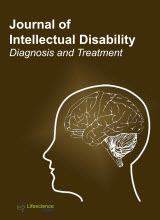jiddt
|
|
Abstract: Background and Objective: Given that a small percentage of people with ischemic stroke are treated with recombinant tissue plasminogen activator (rtPA) in Iran, it is necessary to use appropriate educational methods that, in addition to raising the awareness of patients about stroke, lead them to refer health centres early. The purpose of this study was to evaluate the effect of new methods of training warning signs of acute stroke on thrombolytic therapy. Method: This was a community-based empirical intervention study in Ahvaz, Iran, in 2018. Initially, educational content was provided, including warning signs of a stroke, its risk factors, and the need for prompt referral to a well-equipped treatment centre for thrombolytic therapy. This content was used to prepare brochures, pamphlets, posters, and training sessions for health care personnel. Before starting, immediately, and three months after the training course, a questionnaire was used to assess staff knowledge of stroke symptoms and the need for rapid patient referral for FAST-based thrombolytic therapy. Also, the timely referral of patients with suspected stroke to hospital, as well as their thrombolytic therapy during the six months after the intervention and the similar six months in the previous year were compared. Results: The level of knowledge was significantly increased at the end of training (P<0.0001). Although this average was reduced three months after completion of training, the difference was not significant (P = 0.42). Based on the results, the number of stroke patients referred to hospital in golden time (less than 4.5 hours) from the beginning of training to 6 months after the end of the course (n = 54) was increased compared to the same period last year (n=38). The number of thrombolytic patients from the beginning of the training course to 6 months after the course (n=38) increased compared to the same period of the previous year (n=21). Conclusion: Based on the results, the implementation of educational programs was reported to be effective in raising public awareness of stroke symptoms and the need for prompt hospital referral for appropriate and timely treatment. . Keywords: Ischemic stroke, Thrombolytic therapy, Educational programs.
|
|
|
Abstract: Background and Objective: Vestibular rehabilitation therapy (VRT) is an exercise-based program designed to improve balance function and alleviate problems related to dizziness, including vestibular hypofunction. This study aimed to evaluate the therapeutic effects of VRT exercises on balance function in adults with unilateral vestibular hypofunction (UVH). Keywords: Vestibular rehabilitation, Adult, Unilateral vestibular dysfunction.
|
|
|
Abstract: Japan implemented new legislation to prevent the abuse of persons with disabilities on Oct 1, 2012. Many specialists from various domains participated in the development of interventions to prevent such abuse. Here, we conducted a pilot analysis to examine the cost of such interventions and to explore differences in resources. In particular, we compared resources for the assistance of victims with intellectual disabilities with those for the assistance of victims with other disabilities. We requested the enrollment of the anonymous case records of 16 local governments. Thirteen municipal/certified centres reported 41 cases, including 42 victims. Of them, 27 victims had intellectual disabilities. We calculated both the time and human/social resources consumed per case until the resolution of the case. Although the median length of time from the start of the intervention until the solution of the claimed crisis seemed longer in cases abused by their families, an analysis of 22 familial cases did not reveal a significant relationship between the type of disability and the resource. Although the existence of intellectual disabilities did not seem to impact the resource, our method of analysis worked well. The accumulation of more cases is warranted. Keywords: Abuse, intellectual disabilities, intervention, legislation.
|
|
|
Abstract: Objective: The authors provide justifications for changing the current education system, updating the teaching and methodological approach in school specialised education. The paper investigates the issue of fashioning students' research competence through the technology of project activities. Keywords: Educational systems, cognitive skills of students, project technology, educational courses, specialised education.
|
|
|
Abstract: Objective: The study aimed to study the specific features of non-verbal communication in children with intellectual disabilities in the dynamics of psychological impact. Keywords: Children with special educational needs, students with intellectual disabilities, school curriculum, inclusive education, communication between students.
|


